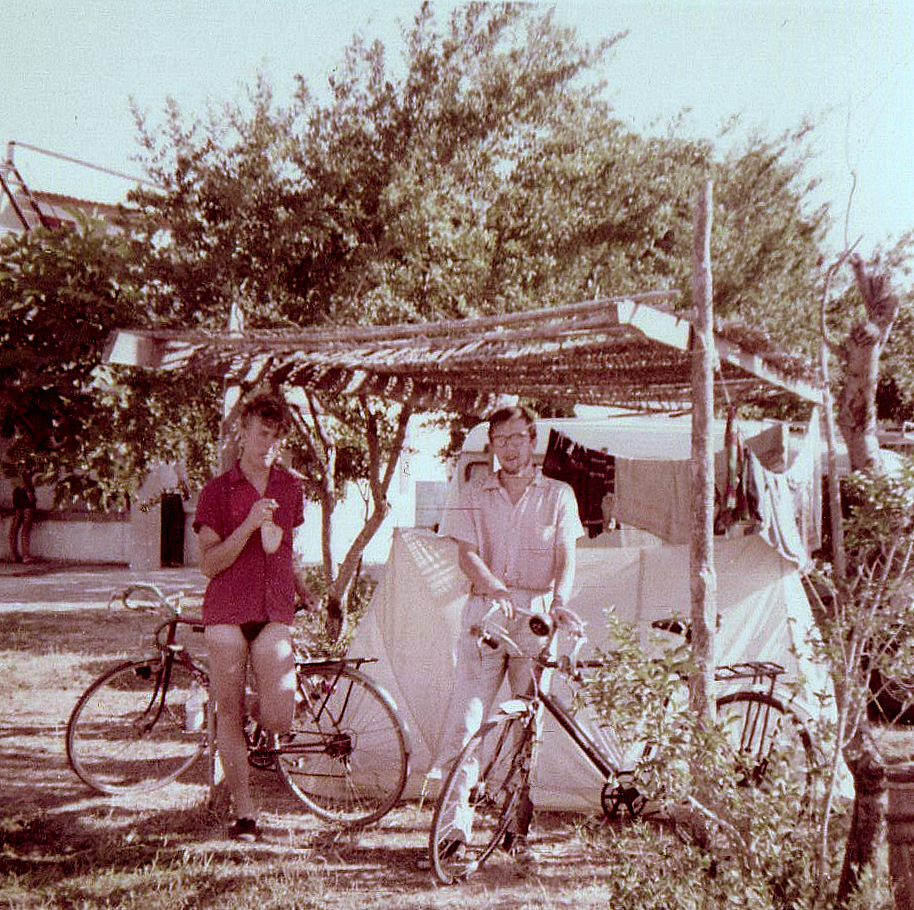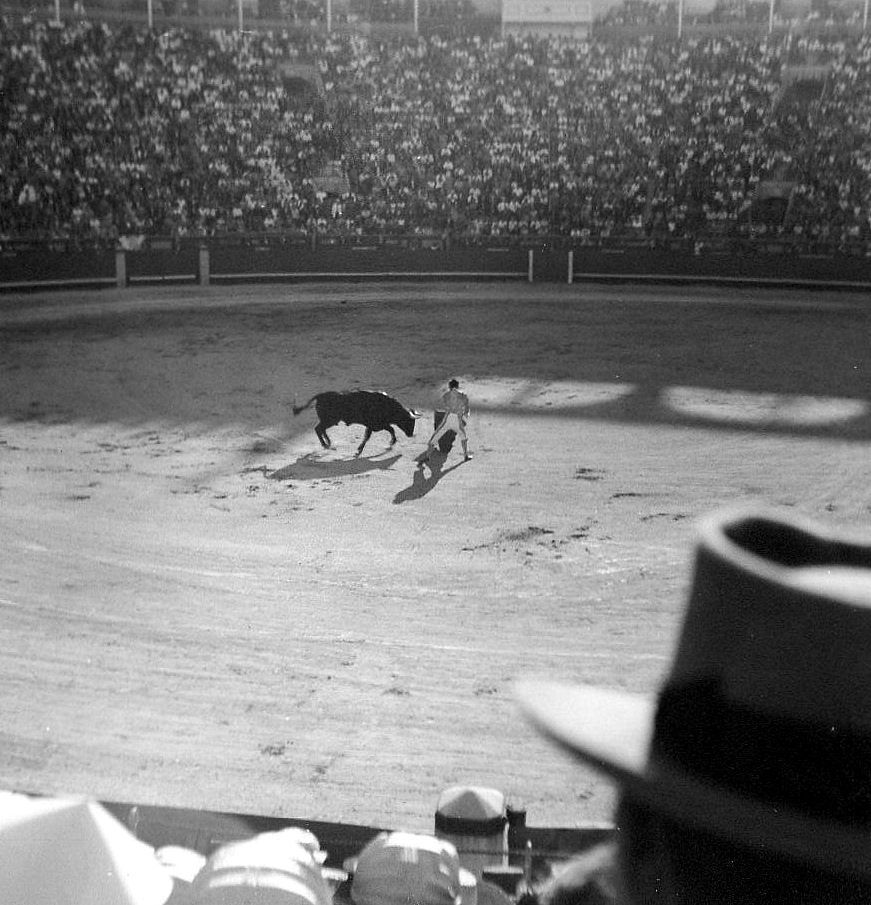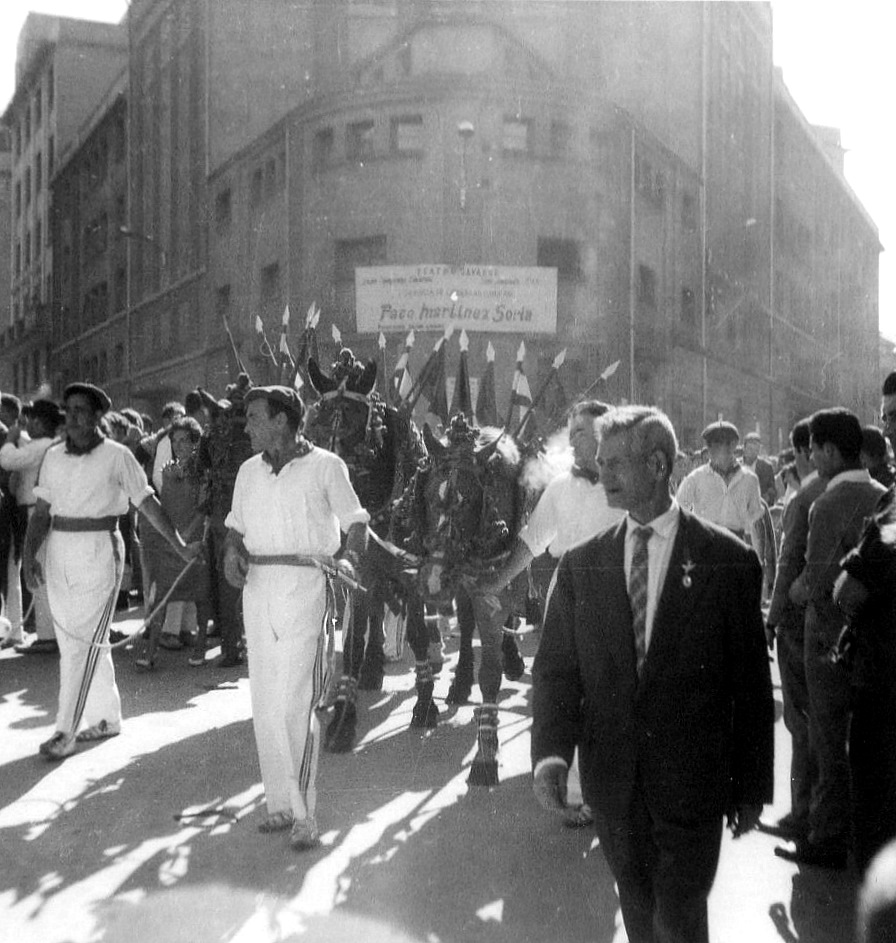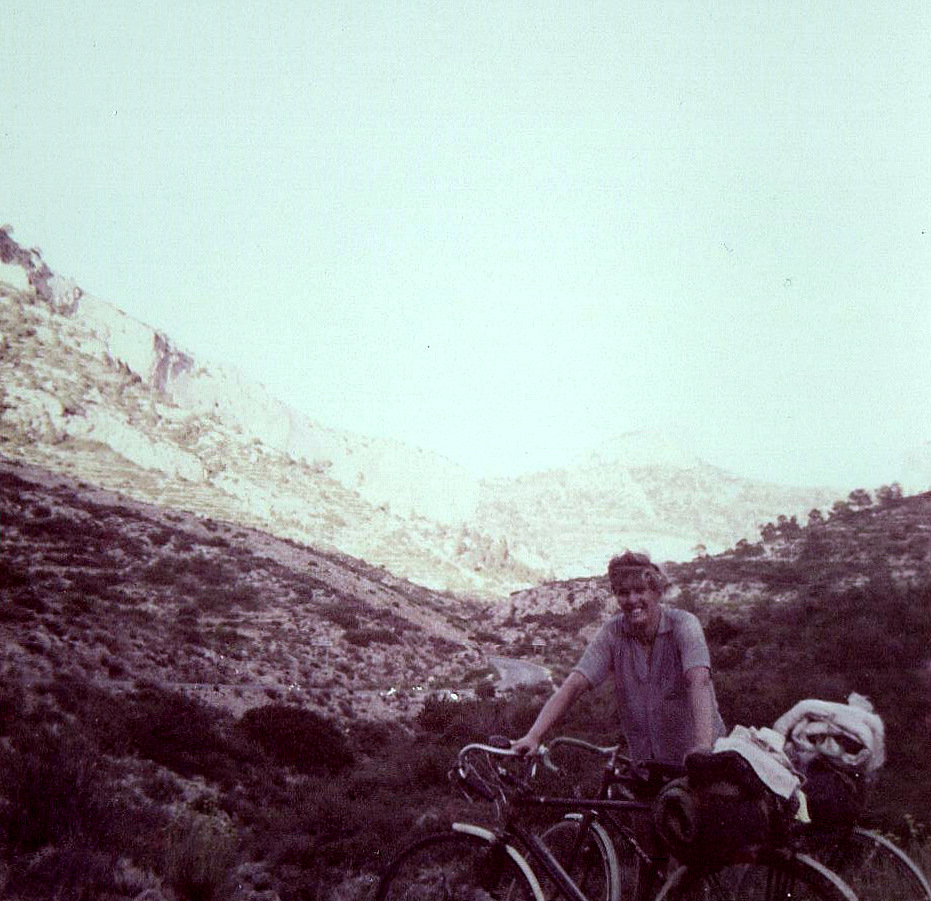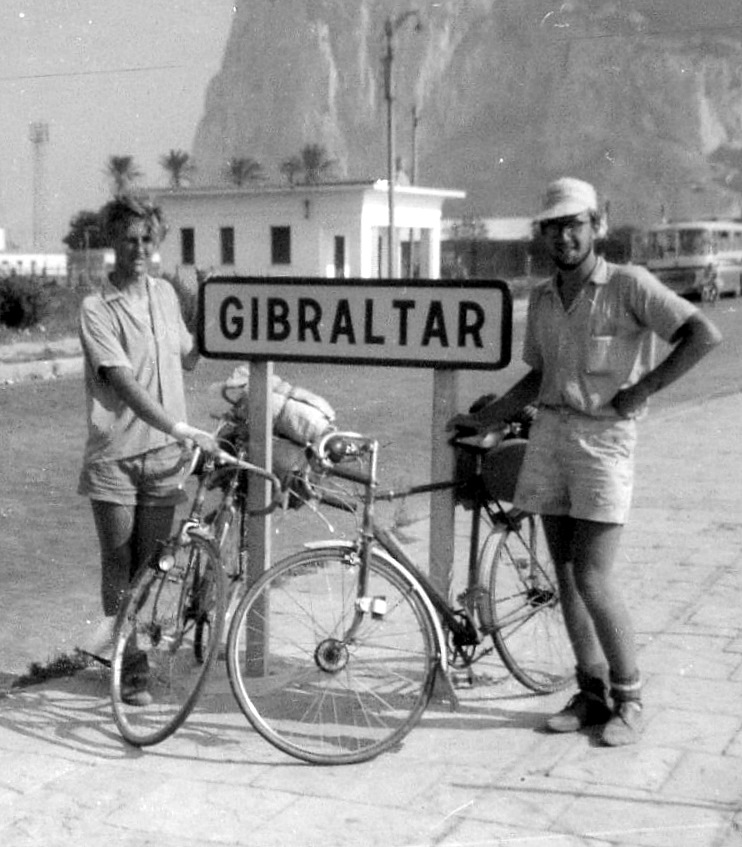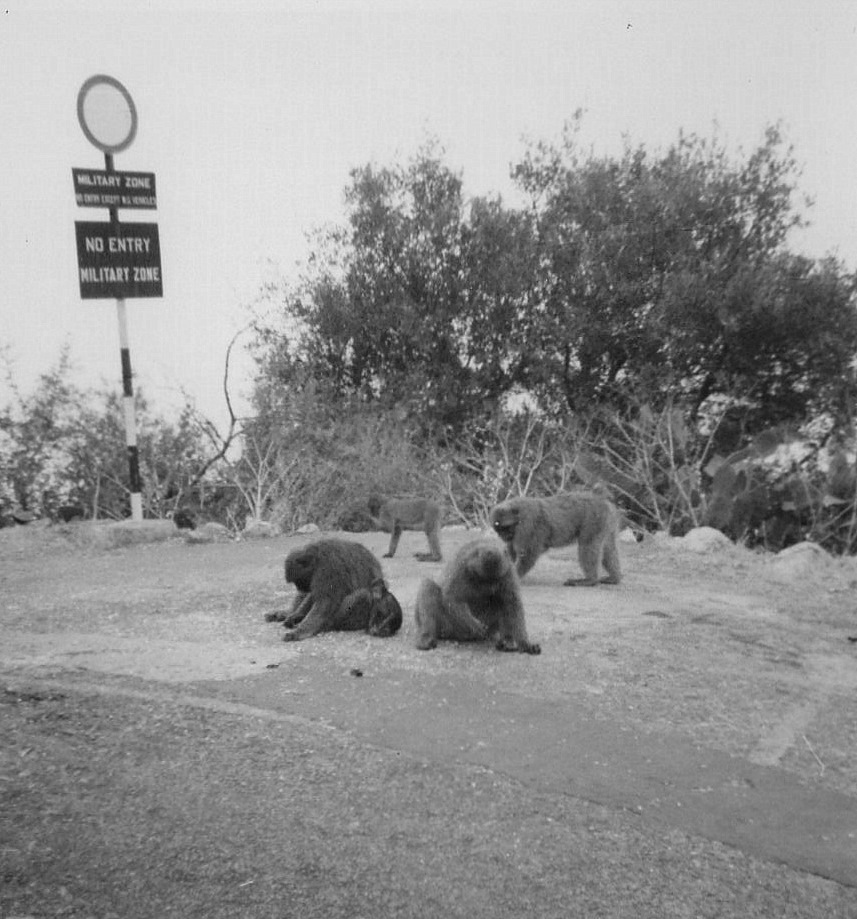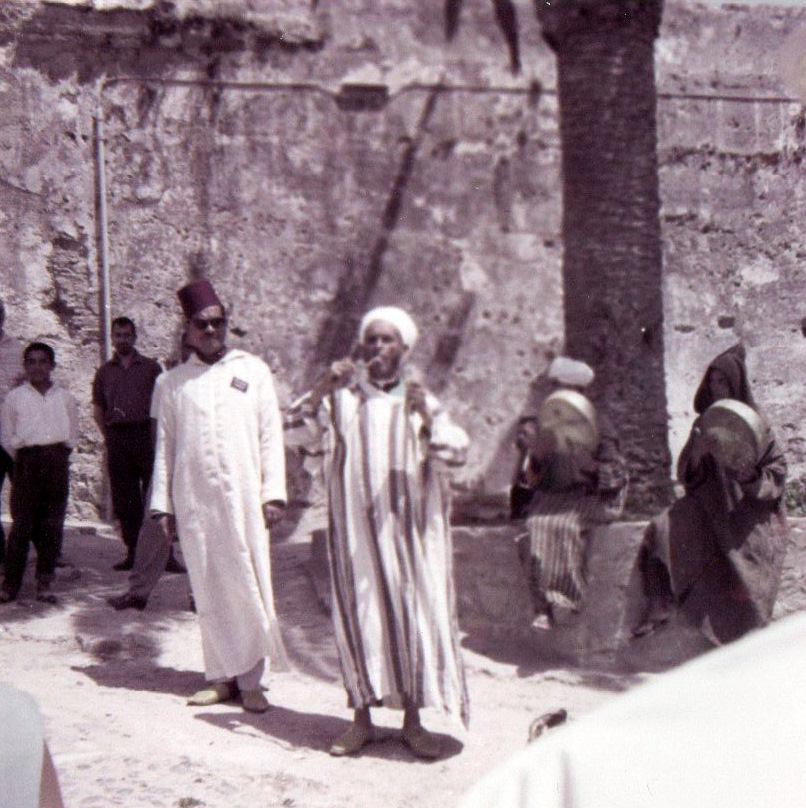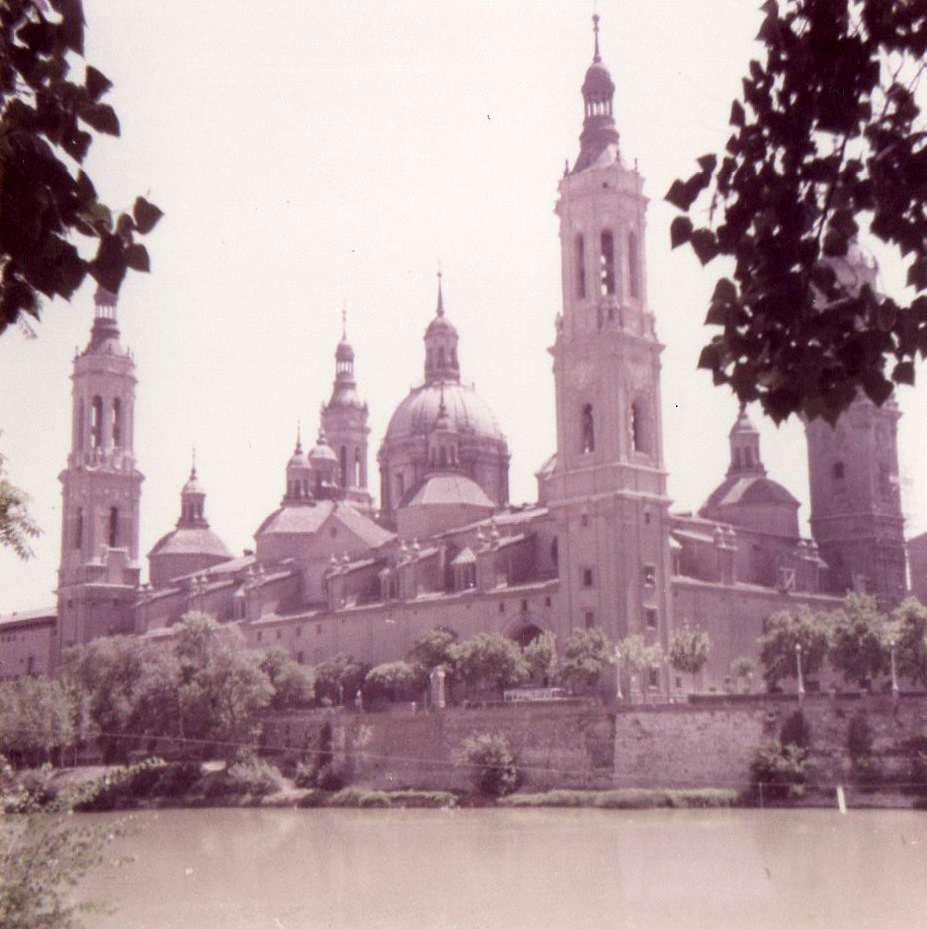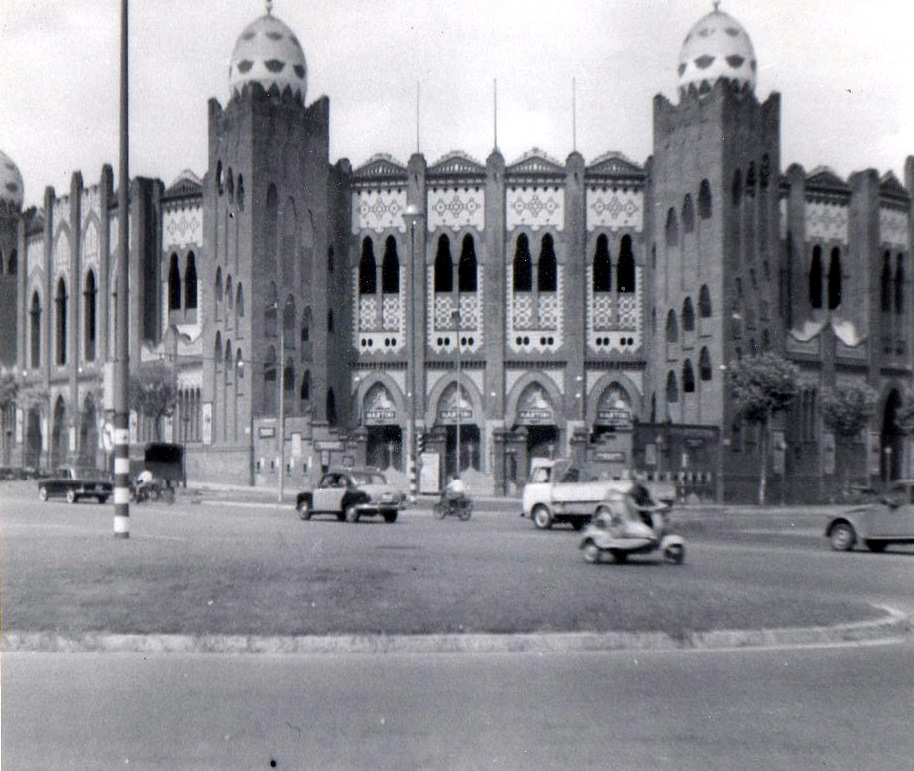Three Thousand Miles on an Old Bicycle
Local student's adventures in Spain
By H. Kendal-Ward
Published in The Tewkesbury Register & Gazette, October 16, 1964
Two months on a bicyle might not be many people's idea of a relaxing holiday, but I had a desire to see Spain as cheaply as possible and am still convinced that one travels too fast in a car to appreciate scenery.
However, when I started I did not envisage many of the hazards that were to follow. It was a coincidence that a friend from college, Alan Kinshott, of Guildford, had independently decided upon a similar journey.
My bicycle was fifteen years old and needed repairs before I started, as the last time I had ridden it, exactly a year ago, it had broken down near the motorway and I had to carry it back to Tewkesbury.
We crossed the channel from Newhaven to Dieppe, and arriving at 3 a.m. made our only mistake. Leaving the quay, we went the wrong way up a one-way street on the wrong side of the road! We spent the remainder of the night sleeping by the roadside just outside Dieppe.
Our first few days of cycling found us arriving at the camp sites in the evening very exhausted after 80 or 90 miles covered during the day. It so happened that on the first night I fell asleep by the side of the road, while Alan had gone into a shop to buy our evening food.
Wine Sampling
We did not travel straight through France by the shortest route. Instead we went to Orleans and, travelling down the Loire, we visited various chateaux as we headed towards the west coast of France.Cycling within five miles of the sea from the mouth of the Gironde river to Biarritz. We were near the Spanish border.
On one day in 60 miles of travel we did not have any inclines to ascend and counted only seven villages or towns; but what was more formidable was that we only encountered twelve corners. The boredom was only alleviated by counting the milestones as they passed.
It was hot during the week we took to reach the Spanish border near San Sebastian. As we has worn shorts all the time, we were a conspicuous colour on the beach. Unfortunately, San Sebastian was not ideal for bathing as there were frequent showers.
However, our dampened spirits were cheered by the company at the camp site. One evening we joined a group of English and Spanish young folk on a wine-sampling spree that lasted into the early hours of the morning. The consequence of this was that there were few people the next morning without hangovers!
We had slept so soundly that we did not realise there was a river of rainwater flowing through the tent. We went to a cafe where six Englishmen later entered. The first went to the counter and ordered six black coffees. This did not strike us as unusual until each one of his compatriots went up in turn to order a further six for themselves!
Because of the rain we decided to travel quickly down the centre of Spain, through Madrid to the south.
Famous Fiesta
The first day we reached Pamplona, but not without strain. In France the only trouble we had with either bicycle was a puncture to Alan's tyre. Unfortunately, although it was going down quickly, we were unable to detect the hole and had been forced to buy another inner tube. This, however, had developed a leak itself but was so slow in deflating that Alan could cycle ten miles before he had to pump it up.Thus we rode to Pamplona, pumping up Alan's tyre every ten miles. We were not so fortunate when we left. The tyre went down 15 miles out and was beyond repair. Thus Alan had to walk back to town.
The next day we spent all the morning looking for a bicycle shop that was not closed for the local fiesta. In all we were forced to stay three days in Pamplona, but this was no hardship as the fiesta held in this city is the most famous of the many that take place in Spain.
People crowd into the town from many miles around just to take part in the merry-making during the celebrations of the arrival of San Fermin, the patron saint of Pamplona.
The entertainment starts at 5 p.m. when everyone crowds around the bullfighting stadium, either to enter or watch the ceremonies as others enter, and each person carries plenty of wine with him to start the evening's drinking. Afterwards, people wander round the streets in groups, singing and dancing and playing any instruments they can find.
This voluntary performance continues until late in the evening when a large firework display is held in the main square. When this is over the Spaniards return to their drinking and merry-making, which they keep up through the night until encierro takes place in the morning. At 8 a.m. they retire to bed to sleep until the next round begins with the next bullfight the following afternoon.
Racing the Bulls
The encierro is the name given to the ceremony for which Pamplona is famous. The bulls to be fought in the ring during the afternoon are let out of their overnight stable and driven through the streets towards the bullring.The young men of the town start with them and see if they can race them to the stadium, but making sure they are not caught by the sharp horns. In the stadium, the bulls are let out singly into a mass of young men who try to perform various antics round them.
Many foreigners flock to see the inhabitants' celebrations only to be bemused by the lack of inhibition shown by the Spaniards. Foreigners could be easily detected in the midst of singing and dancing throngs, just staring with a puzzled expression. It is yet more amazing when one realises that this way of life is kept up for a fortnight nonstop!
During our stay the sun shone so strongly that we abandoned the idea of spending many days forcing our way through the heat of central Spain. We decided that we would only endure it for as long as it took us to cross straight to the east coast where we would always have the sea to cool us.
It took us three days to reach the Mediterranean at Tortosa, where the wide Ebro flows into the sea. These three days were far from pleasant as the temperature rose well into the hundred degrees fahrenheit during the afternoon. In the evening a strong headwind would make our tired legs work yet harder to reach our destination.
Valencian Dishes
There are no camp sites along this route, so we slept in the fields under the stars. The first morning we were rudely awakened by a bulldozer that was working only a few yards away and gradually getting nearer. Then we realised that we had chosen for our bed the work site of a new road, and had been so tired that we had not heard the arrival of the bulldozer until we had almost been included in the rubble in its grasp!Throughout our holiday we had decided to spend only ten shillings each day, except for any extraordinary commodity such as Channel fares. However, we were so eager to reach the coast during these three days that we ewre reluctant to stop at mid-day for our usual daily hot meal and survived on fruit. Thus we had saved a little by the time we reached the coast.
After a swim, we entered a restaurant and ordered the set meal. To start, a salad and bowl of bread was brought for us to eat as we pleased. The first course was a large Paella, a local Valencian dish that consisted of rice with various seafoods such as lobster and oysters cooked in with it. The second course was a quarter of a chicken with chips and, to finish, a slice of melon and grapes.
To drink we had a two-pint jar full of wine which was replenished when empty. The cost for this meal was only 7s. 6d., but in later towns we found we could purchase almost as much for two or three shillings.
After resting a day, we went to Valencia. We had not gone far when I heard new noises coming from my back wheel and it was so buckled that two spokes had snapped. This was hardly a suitable time for the bad roads to deteriorate, but we were horrified to find that the province of Valencia puts its faith in cobblestones - and well-worn ones at that!
Thus, with my bad wheel, I completed a further 100 miles, of which the last 30 were on cobblestones, before arriving at Valencia, where we went to find a bicycle repair shop. We were told that we could collect the bicycle in a few hours, but returned the next morning dreading what the price might be. We had already decided that if it cost too much we would leave the bike at the shop, for by now it was of more sentimental value than monetary.
To our amazement, we found that the man had not only straightened the faulty wheel and replaced the broken spokes, but also renewed the brakes and charged only 4s. 6d. for his services.
On the Plateau
The next few days we headed further south along the Costa Blanca, stopping occasionally for half-days on the beach. Most of the scenery was rocky, with switch-back roads winding round the rocks that dipped steeply to the sea on our left.Before reaching the Costa del Sol on the south coast, we had to go inland into the Sierra Nevada for a couple of days. This is a dry, barren, mountainous plateau where little more thatn olives or cactus survives the sun and the drought.
We had looked forward to descending from this to the sea, but when the descent arrived we found there was a strong headwind blowing up the river valley we had to follow. This was so strong that on one occasion it was necessary for me to change into second gear to descend a steep hill, because I was finding I could not force the pedals round against the opposing wind. At Almeria we sampled a few of the local wines in the evening, but fell asleep on the job. This meant that the next morning our breakfast comprised a pint of Malaga wine and a melon - another relic of our supper. A few days later we passed through Torremolinos as quickly as possible. Even the Spaniards there seemed to be holidaymakers, all living in hotels and apartments similar to the London "Hilton".<
Queue for Morocco
It was with great jubilation that we arrived at our objective - Gibraltar - exactly a month after our arrival in France. Before we had been at the camp site more than a quarter of an hour everyone seemed to know that we had cycled from England even though we had only spoken to one person.
Gibraltar fascinated me, especially its mixture of Spanish and English way of life. I found it unusual to see a Spanish "yokel" in the bar drinking a pint of bitter and wrestling with English coinage. Nor was it less surprising to see a "bobby" speaking fluent Spanish.
We visited all the usual sights, including the famous "Smokey Joe's" - the cheapest restaurant in town. Home dishes are served there, and they tasted no less sweet because the waiter called out "bacon, egg and chips" to the cook in Spanish.
We still planned to visit Morocco and found that the crossing was cheaper on a Spanish boat from Algeciras. We cycled the 20 miles one afternoon, when the cloud that always seems to hang over Gibraltar was marring our bathing.
The next day we joined the throng on the quay to buy our tickets. This experience gave plenty of practice for rugby scrummaging because everyone pushed madly to the small windows where tickets were being sold.
This performance had to be repeated at another window for the police to stamp our passports. Eventually the boat left an hour late, everyone being safely on board. The crossing lasted three hours and our effort was rewarded on our entering Tangier.
The difference between Europe, even its extremities, was not as contrasting as the differences between Spain and Morocco in clothes and customs. The men wore long, hooded duffle coats, while the women dressed similarly with the inclusion of veils.
On the boat we had maid the acquaintance of a Moroccan student by the name of Omar. He lived in Rabat but had several hours to spend before his coach left and offered us his services. Unfortunately, unlike the rest of Morocco, the people in Tangier speak Spanish instead of French and their dialect of Arabic was unintelligble to Omar.
Thus we could make ourselves understood better than he, as our Spanish by now was vastly improved. We had much difficulty avoiding the drug sellers that would pester us in the streets to buy hasish or marijuana.
We spent the night sleeping on the beach, protecting ourselves from the wind with tables from a beach restaurant until the proprietor turned up. The wind caused a great movement of sand and in the morning we found that our hair and belongings were full of sand. We had until 4 p.m. to do further sightseeing before the ferry left to take us back to Algeciras.
Barcelona Fireworks
We had decided that as this was a holiday and not an ordeal we did not want to return over territory through which we had already travelled. Therefore, to allow more time, we would take a train back to the place we had originally joined the Mediterranean, 600 miles away. This would cost £3 for us and the bicycles.We returned to Malaga to catch the Barcelona train and see what the fiesta in that town was like. It was better organised than Pamplona's with a fairground laid out in the streets. The firework display was held in the harbour. The thing that made this yet more different was that so many people - especially the girls - were wearing traditional Andalucian costumes with full multi-coloured skirts and black "boater" hats.
The train journey was not too arduous. We shared the train with numerous Algerians and Moroccans, and everyone had enormous suitcases, usually filled with food with which they filled themselves for the whole of the 30 hours of the journey.
By the time we had reached our destination we had moved from the wilting sun of the south and now it grew cloudy and during the 48 hours on the Costa Brava we endured seven thunderstorms.
The weather stayed with us through France and on more than one night we were drenched in the tent. This slowed us down, but we managed to ride over 120 miles on three of the seven days it took to cover the 700 miles.
Towards the end of this my back wheel was buckling again and the spokes were flying out frequently, with the result that by the time I reached London six spokes had snapped, more were loose and the frame was cracked.
Yet it was not thus that held us up but the fact that my tyres were warn completely to threads, but lasted to within ten miles of Dieppe when they wore through and I had a puncture. A makeshift repair not only saw us to Dieppe but also to London.
This concludes my story about a 4,000-mile journey of which more than 3,000 were covered on an old bicycle which has ended with more damaged parts than sound ones.
We both returned with such an appetite that after we had slept on the day after our return, we did nothing but eat for a week.
Click here to see the original story as appeared in The Tewkesbury Register & Gazette, October 16, 1964
Click here for the map of the trip.
